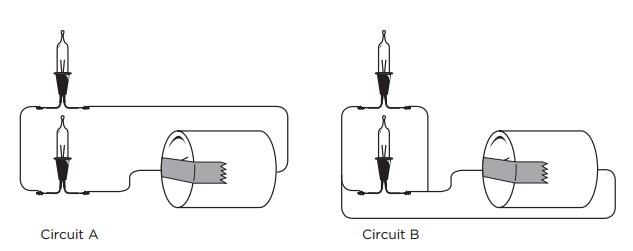In this activity, students will experiment with batteries and light bulbs to learn about series and parallel circuits.
There are 2 different types of circuits:
- Series circuits
There is only one path from the source through all of the loads (resistance) and back to the source. In other words, all of the bulbs are on the same loop. Each light added in series makes all of the others dimmer, since each light bulb slows down the flow of current. A broken light will interrupt the whole circuit.
- Parallel circuits
Every load (resistance) is connected in a separate path and receives the full circuit voltage. In other words, each bulb is connected on a separate loop to the energy source. Two lights connected in a parallel circuit will be as bright as one by itself. The drawback is that the energy source gets drained quickly.

